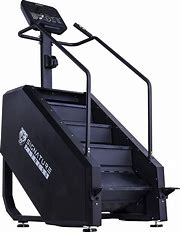Canada is making waves in space technology by providing cooling systems for NASA’s Artemis IV mission. This significant development comes at a crucial time when the future of the 2028 moon landing mission hangs in the balance due to budgetary uncertainties.
At the forefront of this groundbreaking initiative is Berg Chilling Systems, a Toronto-based company that has delivered a cutting-edge refrigeration system for NASA’s ambitious lunar exploration program. The cooling system, strategically installed on the Mobile Launcher 2 (ML2) at Florida’s Kennedy Space Center, plays a pivotal role in maintaining optimal temperatures within the Orion crew capsule as it embarks on its lunar journey.
Stephanie Yeung, a marketing specialist at Berg Chilling Systems, emphasized the importance of pushing technological boundaries through missions like Artemis IV, stating,
“The moon is much closer and is the perfect proving ground for the scores of new technologies that need to be developed to successfully land people on Mars.”
The challenges facing this cooling technology are immense, considering it must endure extreme conditions such as withstanding temperatures reaching 1,200 degrees Celsius and coping with an astonishing 8.9 million pounds of launch thrust generated by the Space Launch System (SLS) rocket.
Berg Chilling Systems takes pride in developing equipment built to last beyond current missions. With resilience against “decades of corrosion,
” according to Berg representatives, NASA aims for this sophisticated cooling system to remain operational for an impressive 25-year lifespan—a testament to its durability and advanced engineering.
Don Berggren, President of Berg Chilling Systems, described this endeavor as one of their most challenging projects yet. He highlighted the technical complexity involved in creating a solution tailored specifically for ML2 while meeting NASA’s stringent requirements.
However, uncertainties loom over the fate of Artemis IV and subsequent SLS-based missions following proposals from the Trump administration that could potentially impact funding allocations. Yeung expressed concerns about potential disruptions if these budget cuts come into effect: “
If Artemis IV gets canceled due to budget constraints…the cooling system may not be used.
”
Despite these challenges, Berg Chilling Systems remains optimistic about continuing their contributions towards advancing space exploration technology. Yeung voiced confidence in ongoing lunar missions while questioning plans shifting focus towards Mars exploration: “
To go to Mars, NASA has got to go to the moon first.”
NASA’s Artemis program holds significant promise in revitalizing human space exploration by aiming to return astronauts to the moon after nearly five decades since Apollo missions. The long-term vision includes establishing a sustainable presence on Earth’s natural satellite as a stepping stone towards crewed deep space expeditions—including eventual journeys to Mars.
The Artemis I test flight marked a crucial milestone in November 2022 despite delays pushing back initial crewed moon landing targets from 2024 to possibly 2027. As uncertainty surrounds Artemis IV set for September 2028 launch date, questions arise regarding its continuity amidst evolving priorities within NASA.
Artemis IV envisions deploying four astronauts alongside a habitation module at Lunar Gateway—an essential orbital outpost facilitating lunar surface access beyond low Earth orbit akin to International Space Station (ISS). SpaceX-designed Starship rockets would transport members for groundbreaking exploratory ventures and scientific undertakings on our celestial neighbor.
Canada’s involvement underscores its longstanding partnership with NASA; notable contributions include Spar Aerospace and MDA Space supplying iconic Canadarm systems integral during Shuttle and ISS operations—culminating now with Canadarm3 production slated for Lunar Gateway activities.
Moreover,Ka Imaging,a University of Waterloo spinoff,made history by deploying medical X-ray systems aboard Fram2 mission marking advancements even beyond robotic technologies into healthcare applications-reflecting Canada’s multifaceted contributionsto burgeoning fieldofspaceexploration.
In conclusion,this collaboration showcases Canada’s pivotal rolein shaping futureofhumanity’s cosmic endeavorsunderscoring potentialeconomicandscientific returnsfrominvestmentsinspace researchandinnovationsmoving forward.









Leave feedback about this